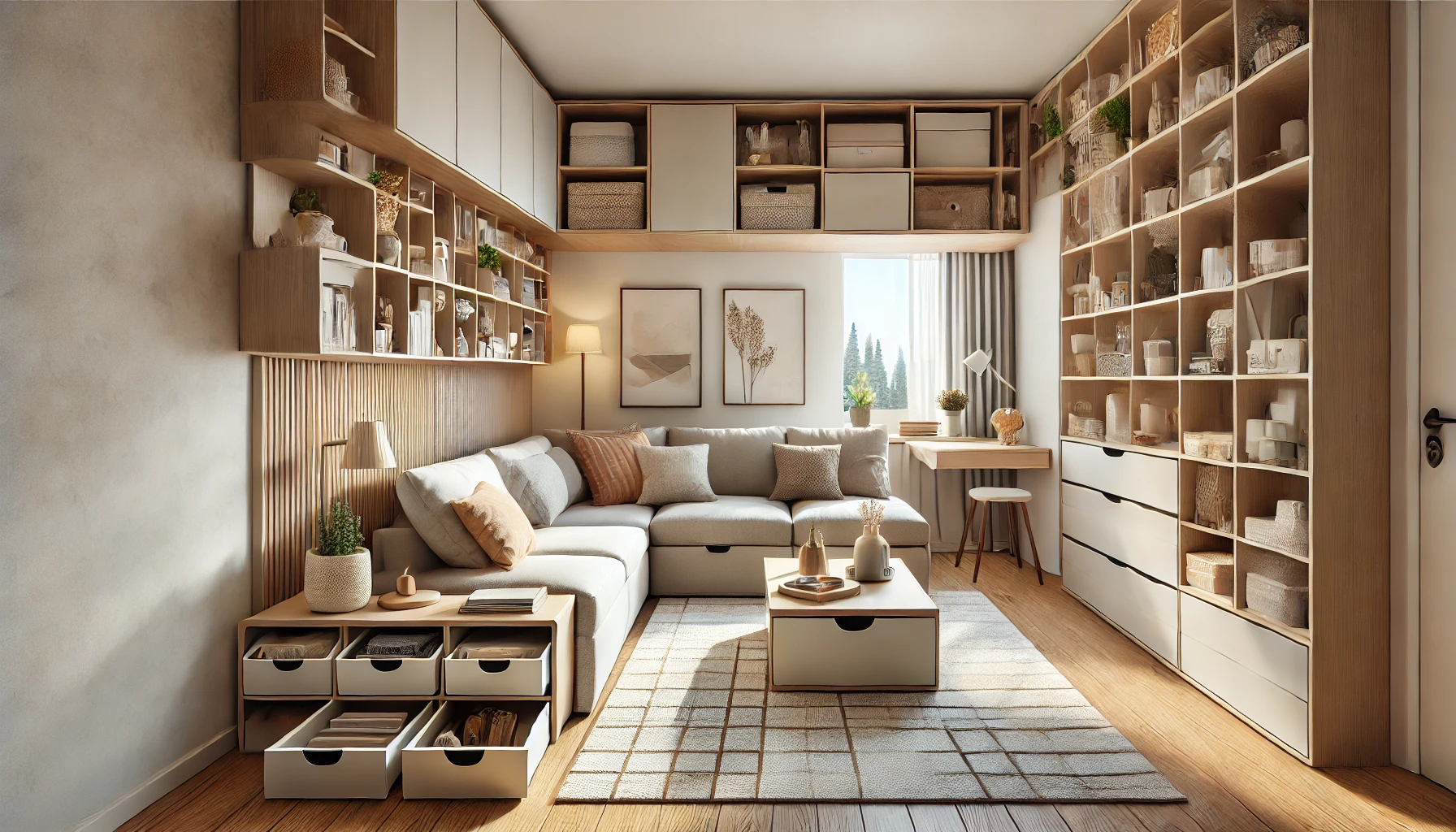Organizing and decorating small spaces can be a challenge, but with the right strategies, you can create a stylish, functional, and spacious-feeling environment. When dealing with limited square footage, every inch counts, so it’s important to maximize your space while maintaining a beautiful and organized look. In this article, we’ll discuss how to organize and decorate small spaces effectively.
1. Embrace Multi-Functional Furniture
In small spaces, multi-functional furniture is essential. These pieces help you make the most of your space while keeping it practical and stylish.
- Sofa beds or futons: These serve as both seating and a bed, making them perfect for a small living room or studio apartment where space is limited.
- Storage ottomans: Ottomans that open up to provide storage are a great way to keep extra blankets, pillows, or toys out of sight while also offering additional seating.
- Expandable dining tables: Choose a dining table that can be extended when you have guests, but can be kept compact for everyday use.
Multi-functional furniture maximizes both function and style, allowing you to optimize every square inch of your space.
2. Keep Things Light and Bright
Color plays a crucial role in making a small room feel larger and more inviting. Light colors reflect natural light and make a room feel open and airy, while dark colors can make a space feel cramped and closed in.
- Light-colored walls: Opt for whites, light grays, soft blues, or pale yellows for your walls. These colors will help the space feel bigger and more open.
- Reflective surfaces: Incorporate mirrors, glass, or shiny metallic finishes into your decor. These materials reflect light, creating the illusion of more space.
- Accent colors: While keeping the majority of the room light and neutral, add pops of color through accessories like throw pillows, rugs, and artwork. This adds interest without overwhelming the room.
Using light colors and reflective materials creates a bright and airy atmosphere, making your small space feel larger and more welcoming.
3. Use Vertical Space for Storage and Decor
When floor space is limited, it’s important to take advantage of your walls. Vertical storage options are key to keeping the space organized while also adding decorative elements.
- Floating shelves: These are perfect for storing books, plants, or decorative items without taking up floor space.
- Wall-mounted cabinets: If you need extra storage, install wall-mounted cabinets or shelving units to keep things organized and out of sight.
- Hanging hooks or racks: Use hooks or racks for storing coats, bags, or accessories, allowing you to keep items off the floor and organized.
By using vertical space, you can free up floor space and maintain a neat, organized room.
4. Declutter and Keep Only What You Need
In small spaces, clutter can quickly make the room feel cramped and chaotic. Keeping the space neat and organized is key to making the most of the area.
- Purge unnecessary items: Go through your belongings and keep only the items that you truly need or love. Donate or sell things that are taking up space and no longer serve a purpose.
- Storage solutions: Invest in stylish storage solutions like baskets, bins, or drawer organizers. These will help you keep items organized and out of sight.
- Minimalist decor: In a small room, less is more. Choose a few key decorative pieces and avoid overcrowding shelves or tabletops with too many items.
Decluttering your space and keeping only essential items will help your small room feel more open and peaceful.
5. Create Defined Zones in Open Spaces
In open-plan spaces, it’s important to create distinct zones for different activities, such as a living area, dining area, or workspace. This helps organize the space while still maintaining an open feel.
- Area rugs: Use rugs to define different areas of the room. For example, a rug in the living area can create a cozy seating space, while a rug in the dining area separates the eating space from the rest of the room.
- Furniture placement: Arrange furniture in a way that creates clear divisions between zones. For example, place a sofa facing a TV to define the living area, or use a console table to separate the dining area from the rest of the room.
- Vertical dividers: Use shelves or curtains to visually divide spaces in a way that doesn’t block light or flow.
Creating zones in an open space helps maintain a sense of order and functionality while allowing the space to feel connected.
6. Make Use of Hidden Storage
Maximizing storage in small spaces often requires thinking outside the box. Hidden storage options allow you to keep things organized without cluttering up your space.
- Under-bed storage: Use storage bins or drawers under the bed to store off-season clothing, extra bedding, or shoes.
- Furniture with hidden compartments: Look for pieces that offer hidden storage, like coffee tables with drawers or benches with lift-up seats. These can help you keep items out of sight while adding style to the room.
- Built-in storage: If you have the option, consider built-in storage solutions such as recessed shelves or cabinets. These are especially helpful in small kitchens, bathrooms, or entryways.
Hidden storage solutions keep the room tidy and organized without sacrificing style.
Conclusion
Organizing and decorating small spaces requires smart planning and creativity. By embracing multi-functional furniture, using vertical storage, keeping the space light and bright, and decluttering, you can create a functional and beautiful environment that maximizes every inch of your room. With these tips, you’ll be able to decorate your small space in a way that feels spacious, organized, and inviting.
